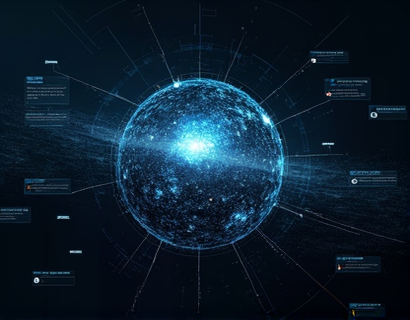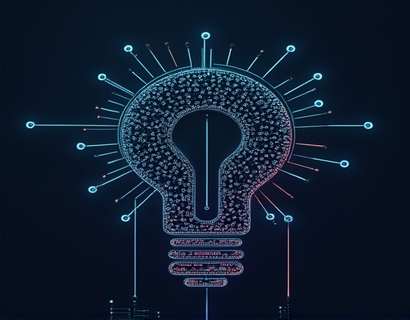Empowering Young Minds with AI-Powered Knowledge Interfaces
In the digital age, access to reliable and safe information is paramount, especially for children and students. The integration of Artificial Intelligence in knowledge interfaces has revolutionized the way users, particularly the younger generation, interact with and absorb information. This article delves into the creation and benefits of an AI-powered knowledge interface designed specifically for children and students, ensuring they receive safe, verified, and specialized insights into various common services and industries.
Understanding the Need for Safe AI Interactions
The internet offers a vast repository of information, but not all sources are credible or safe for children and students. The rise of AI-powered chat platforms addresses this concern by providing a controlled environment where users can interact with content that has been thoroughly vetted for accuracy and appropriateness. This ensures that young users are exposed only to reliable and educational content, free from harmful or misleading information.
Key Features of an AI-Powered Knowledge Interface
An effective AI-powered knowledge interface for educational purposes must incorporate several key features to ensure it meets the needs of its young users. First and foremost, content verification is crucial. This involves cross-referencing information from multiple trusted sources to ensure the accuracy and reliability of the data presented. The platform should also offer a child-friendly version, simplifying complex concepts and using language that is easy for children to understand.
Another essential feature is the secure and safe interaction environment. This includes robust privacy controls, monitoring for inappropriate content, and real-time moderation to address any issues promptly. The interface should also be designed with an intuitive user experience in mind, making it easy for children to navigate and find the information they need without assistance.
Specialized Information for Common Services
One of the primary functions of this AI-powered knowledge interface is to provide specialized information about common services that are relevant to children and students. This could range from understanding how schools and educational institutions operate to insights into healthcare services, public transportation, and community resources. By offering detailed and accurate information, the platform helps young users develop a better understanding of the world around them and how various services contribute to their daily lives.
For instance, when a child asks about the functioning of a hospital, the AI can provide a simplified explanation of the roles of different staff members, the types of treatments available, and the importance of hygiene and safety. Similarly, information about public transportation can include details on how to use different modes of transport safely, schedules, and the environmental benefits of using public transit.
Industry Insights for Students
Beyond common services, the platform can also offer industry insights that are relevant to students' education and future career paths. This could include information on various professions, the skills required for different jobs, and the educational pathways to pursue certain careers. By exposing students to a wide range of industries, the platform helps them make informed decisions about their future and fosters a deeper understanding of the job market.
For example, a student interested in technology might learn about the different roles within a tech company, the importance of coding and problem-solving skills, and the ongoing trends in the tech industry. This kind of knowledge not only enriches their academic experience but also prepares them for the realities of the workforce.
Child-Friendly Safety Features
Ensuring the safety of children using the platform is of utmost importance. The AI-powered knowledge interface must incorporate a range of safety features to protect young users. These include strict content moderation to filter out any inappropriate or harmful content, real-time monitoring to detect and respond to any suspicious activity, and privacy settings that allow parents and guardians to control the information their children access.
Additionally, the platform can implement age-appropriate content filters, ensuring that the information provided is suitable for the user's age group. This might involve using simpler language for younger children and more detailed explanations for older students. The platform can also include educational resources on online safety, teaching children how to navigate the internet securely and responsibly.
Educational AI: A Tool for Learning
The AI-powered knowledge interface serves not only as a source of information but also as an educational tool. By engaging with the platform, children and students can develop critical thinking and research skills. The AI can guide users through the process of finding and evaluating information, teaching them how to distinguish between reliable sources and less credible ones. This skill is invaluable in today's information-rich environment, where the ability to discern fact from fiction is crucial.
Moreover, the platform can adapt to the learning style and pace of each user. For instance, it can provide visual aids, interactive quizzes, and step-by-step explanations to cater to different learning preferences. This personalized approach ensures that each student receives the support they need to grasp complex concepts and retain information effectively.
Building Trust Through Transparency
Trust is a fundamental component of any knowledge platform, especially one designed for children and students. To build and maintain this trust, the platform must be transparent about its operations and the sources of its information. This includes clearly indicating when information is based on factual data, expert opinions, or educational resources. Providing citations and references for the information presented allows users to verify the accuracy of the content on their own.
Regular updates and improvements based on user feedback and the latest educational research further enhance the platform's credibility. By demonstrating a commitment to continuous improvement and user satisfaction, the platform can establish itself as a reliable and trusted source of knowledge for young learners.
Conclusion
An AI-powered knowledge interface designed with safety and educational value in mind offers a powerful tool for children and students. By providing access to verified and specialized information about common services and industries, such a platform empowers young minds to explore, learn, and grow in a secure and supportive environment. As technology continues to evolve, the role of AI in education will only become more significant, making it essential to develop platforms that prioritize the well-being and educational needs of the next generation.











































